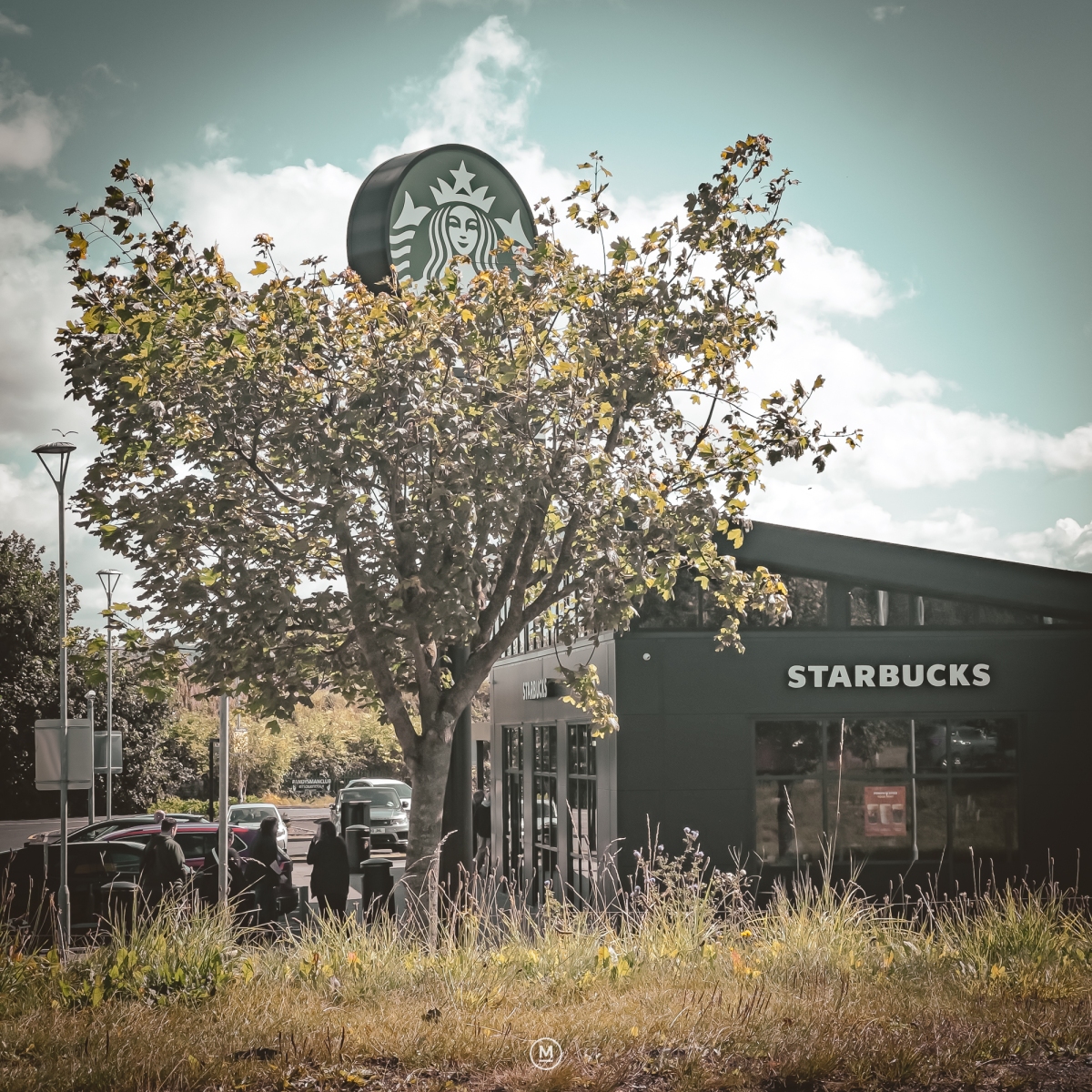The interrelationship between nature, commercial architecture, and human experience has become increasingly complex in the Anthropocene. As a global icon of commercial architecture, Starbucks provides a unique case study to explore how the built environment influences human emotions and perceptions, particularly within the framework of psychogeography and posthumanism. Here, I begin to examine Starbucks through the lens of psychogeography, exploring how its architectural design engages with emotions and landscapes, while also drawing on posthumanist theory to consider how these spaces reflect and reinforce the complex, intertwined relationships between humans, nature, and technology.
Psychogeography, Emotions, and Commercial Architecture
Psychogeography, a term popularised by the Situationists in the mid-20th century, explores the effects of the geographical environment on the emotions and behaviours of individuals. Will Self, a contemporary writer and psychogeographer, extends this exploration into modern urban environments, often critiquing the alienating effects of commercial architecture. Starbucks, with the methodology of McDonaldisation, has carefully crafted interiors designed to evoke a sense of comfort and familiarity, which plays a significant role in this dynamic. Its ubiquitous presence in urban landscapes shapes not only the physical environment but also the emotional and psychological experiences of those who inhabit these spaces.
Self’s critique of urban environments suggests that commercial spaces like Starbucks contribute to a form of “ambient anxiety” (Self, 2007). These spaces, designed for transience and consumption, create a paradoxical sense of belonging and displacement. The replication of Starbucks’ design across different locations—wooden textures, warm lighting, and nature-inspired decor—aims to evoke a sense of natural tranquillity. Yet, this synthetic replication of nature often leads to an uncanny experience, where the comfort provided by these spaces is undercut by their inherent artificiality.
Emotions in the Landscape: Richard Misrach and the Aestheticisation of Nature
The work of photographer Richard Misrach offers a critical perspective on how nature is represented and perceived in the context of human intervention. Misrach’s large-scale photographs, particularly his series Desert Cantos, document the intersections of natural landscapes with human-made structures and environmental degradation. His work reveals the contradictions inherent in the human desire to both dominate and aestheticise nature, a theme that resonates with the commercial appropriation of natural aesthetics in spaces like Starbucks.
In a Starbucks store, the use of natural elements—wooden furnishings, potted plants, and organic forms—mimics a connection to nature. However, much like Misrach’s landscapes, these elements are often commodified, serving as a backdrop for consumption rather than fostering a genuine relationship with the environment. The emotions evoked by such spaces are thus complex, blending comfort with a subtle awareness of the artificiality and commodification of nature (Misrach, 1990).
Posthumanism and the Starbucks Landscape: Rosi Braidotti’s Perspective
Rosi Braidotti’s posthumanist theory provides a framework to understand the Starbucks phenomenon as part of a broader cultural shift towards hybridised relationships between humans, technology, and nature. Posthumanism challenges the anthropocentric worldview, suggesting that the boundaries between humans, nature, and machines are increasingly blurred. In this context, Starbucks can be seen as a microcosm of the posthuman condition, where natural and artificial elements are seamlessly integrated to create a space that caters to both human and non-human actors (Braidotti, 2013).
Braidotti’s concept of “nomadic subjectivity” is particularly relevant here, as it encapsulates the fluid and interconnected identities that emerge within globalised, commercial spaces like Starbucks. The global standardisation of Starbucks stores reflects a form of posthuman identity, where the individual’s experience is mediated through a homogenised, transnational landscape. This standardisation, however, also highlights the tension between the local and the global, the natural and the artificial, as Starbucks attempts to create a “local” experience in every city worldwide.
Conclusion
The intersection of nature, commercial architecture, and psychogeography in the context of Starbucks reveals the complex ways in which emotions, landscapes, and posthuman identities are constructed and experienced in contemporary society. Through the lenses of Will Self’s psychogeographical critiques, Richard Misrach’s aesthetic exploration of nature, and Rosi Braidotti’s posthumanist theory, Starbucks emerges as a space that both reflects and shapes the evolving relationship between humans, nature, and the built environment. These spaces are not merely sites of consumption but are emblematic of the broader cultural and environmental shifts that characterise the Anthropocene, challenging us to rethink our place within a world where the boundaries between nature and culture are increasingly fluid and contested.





